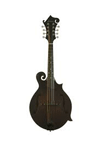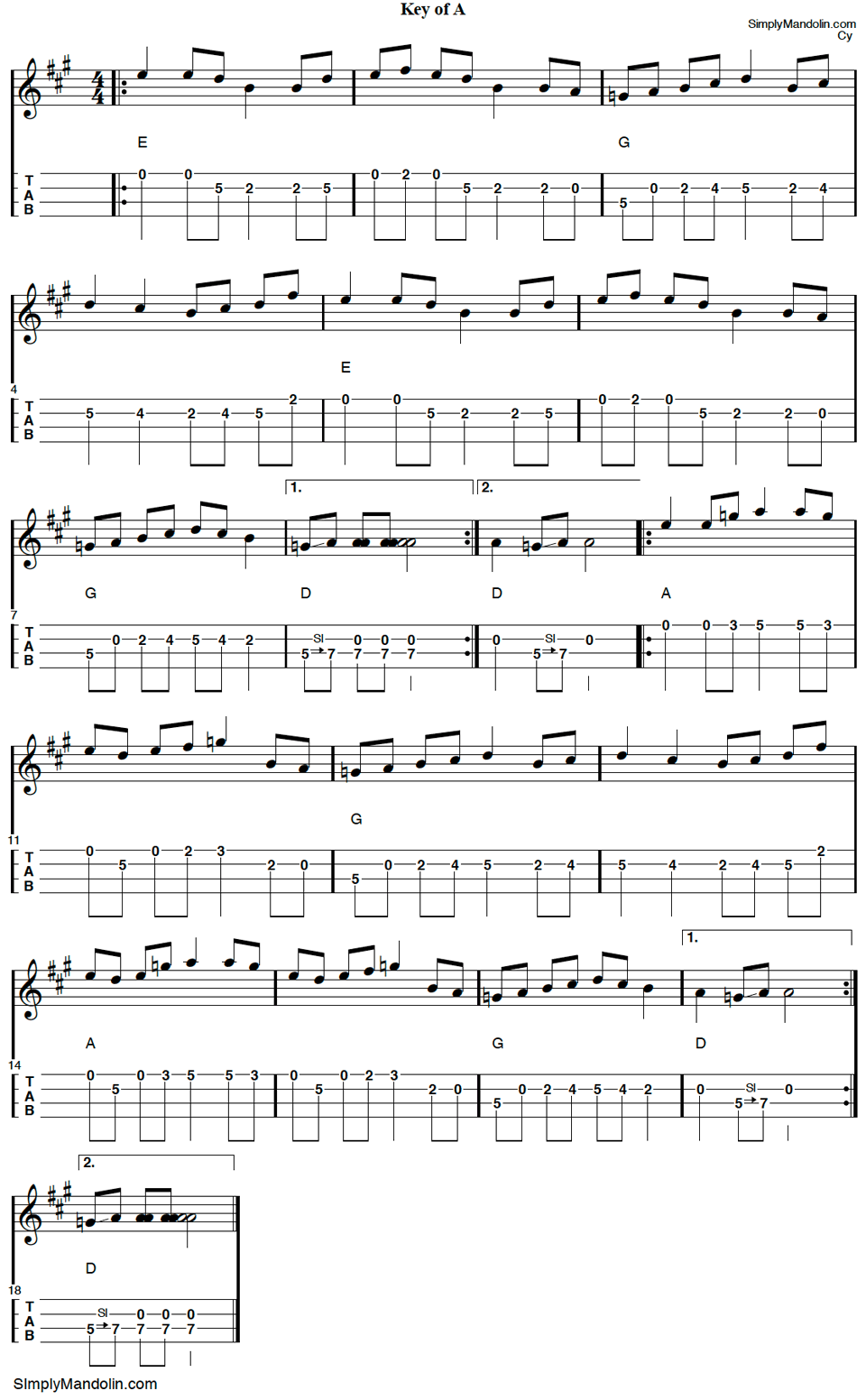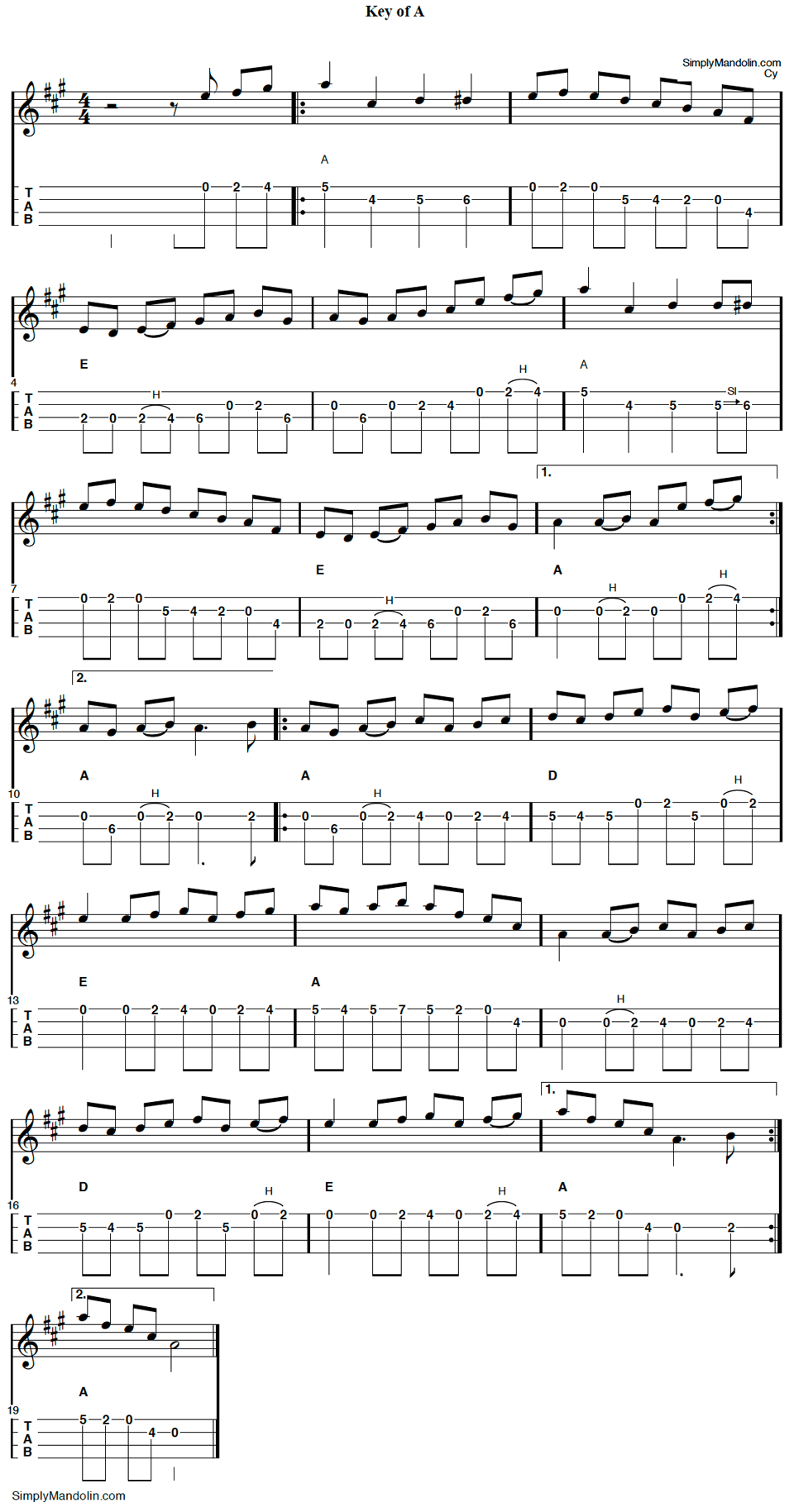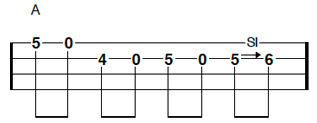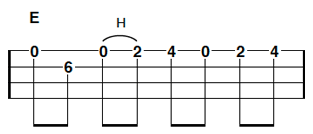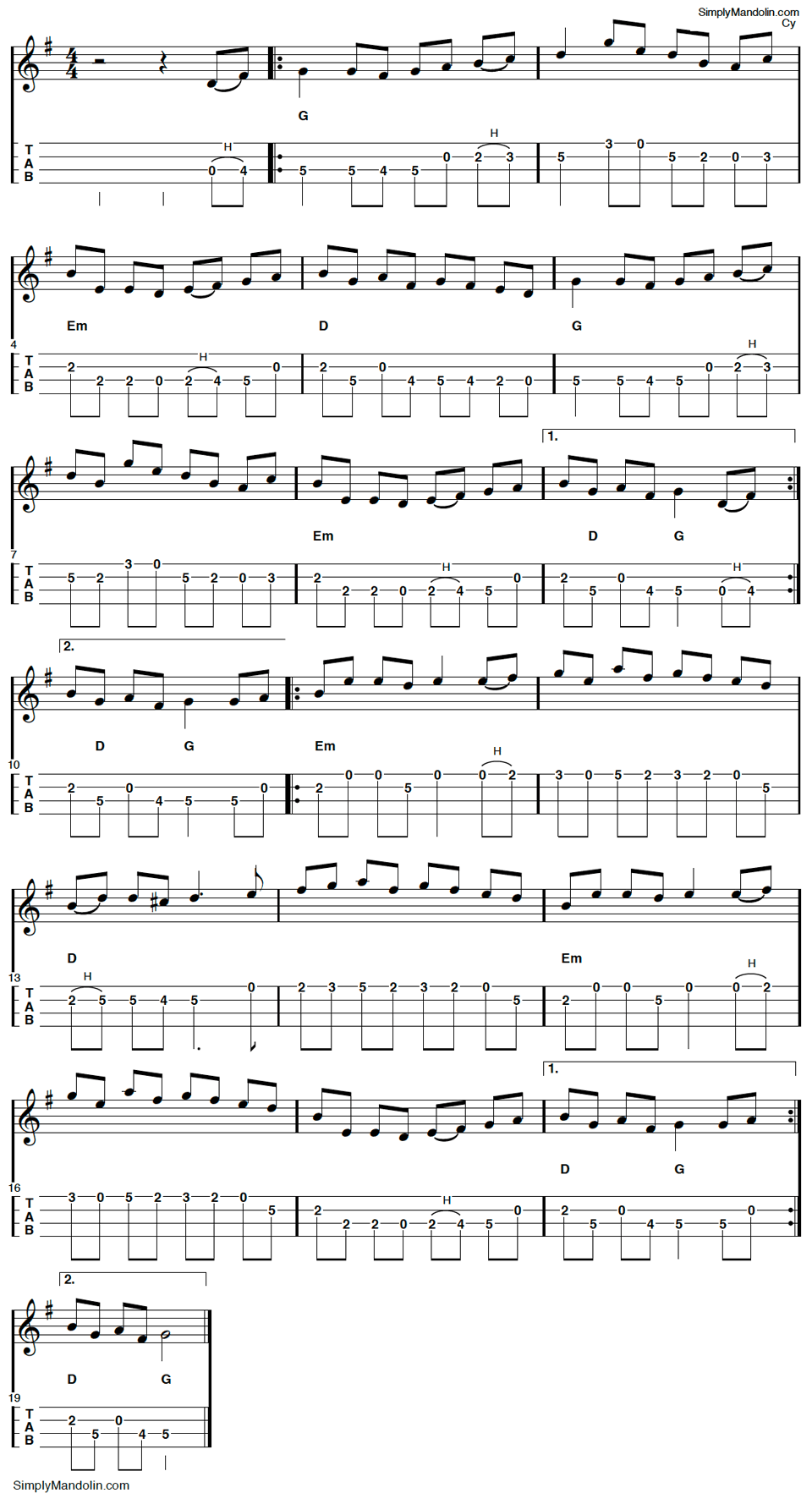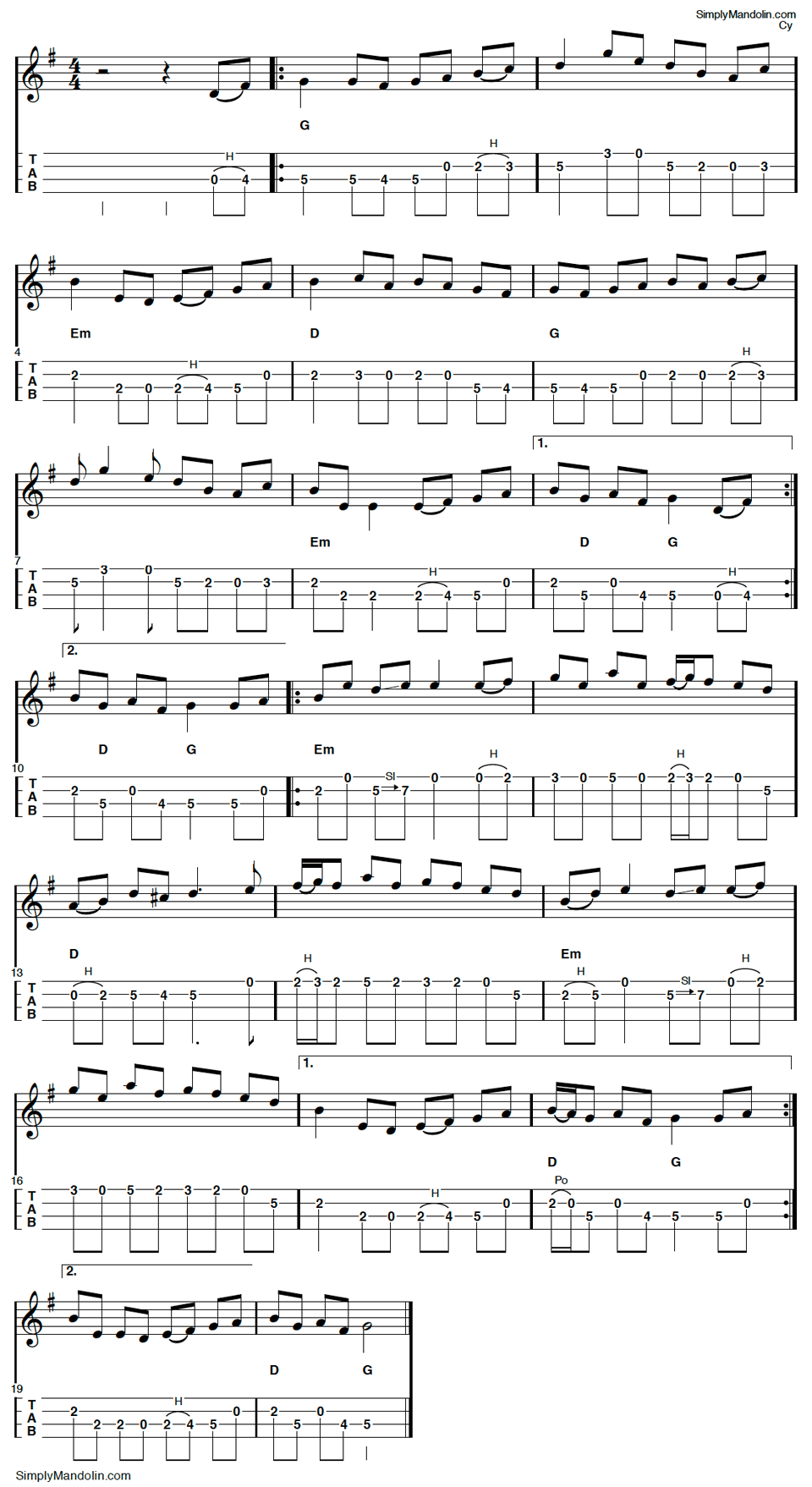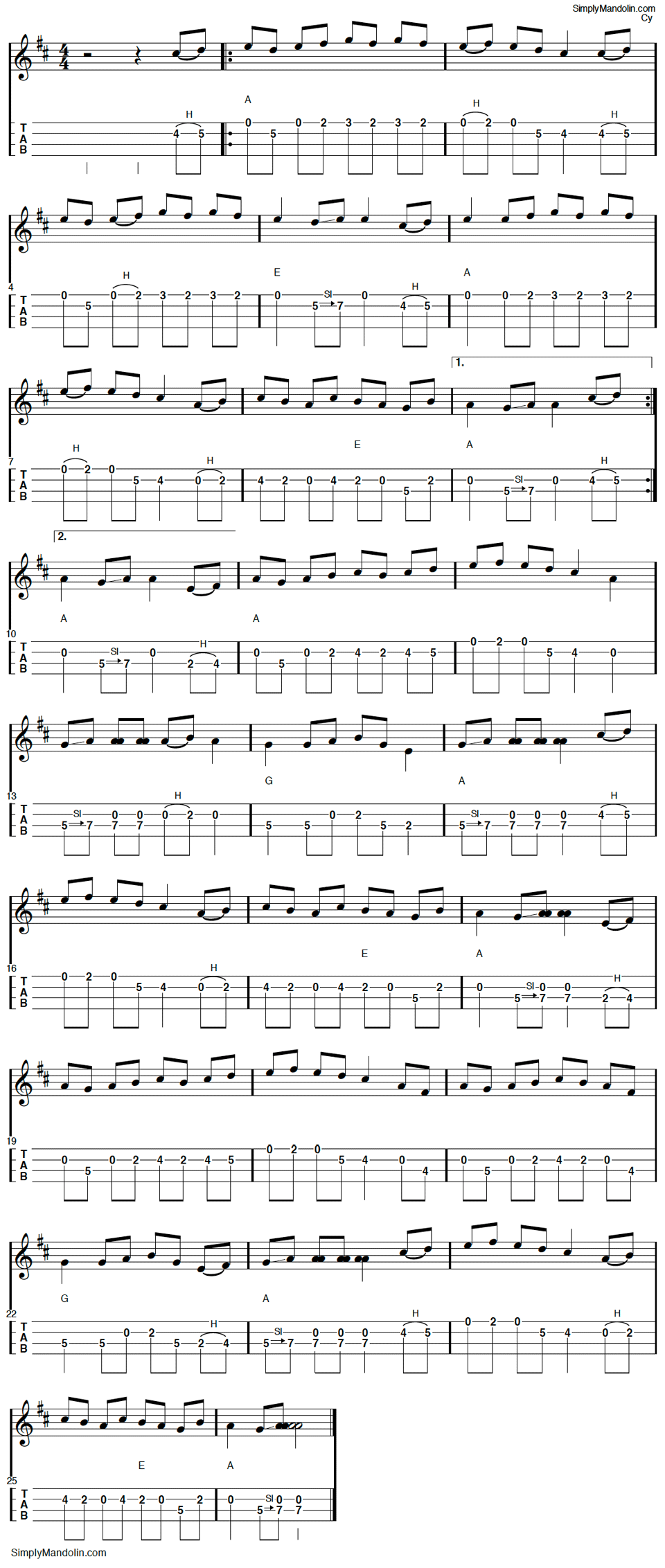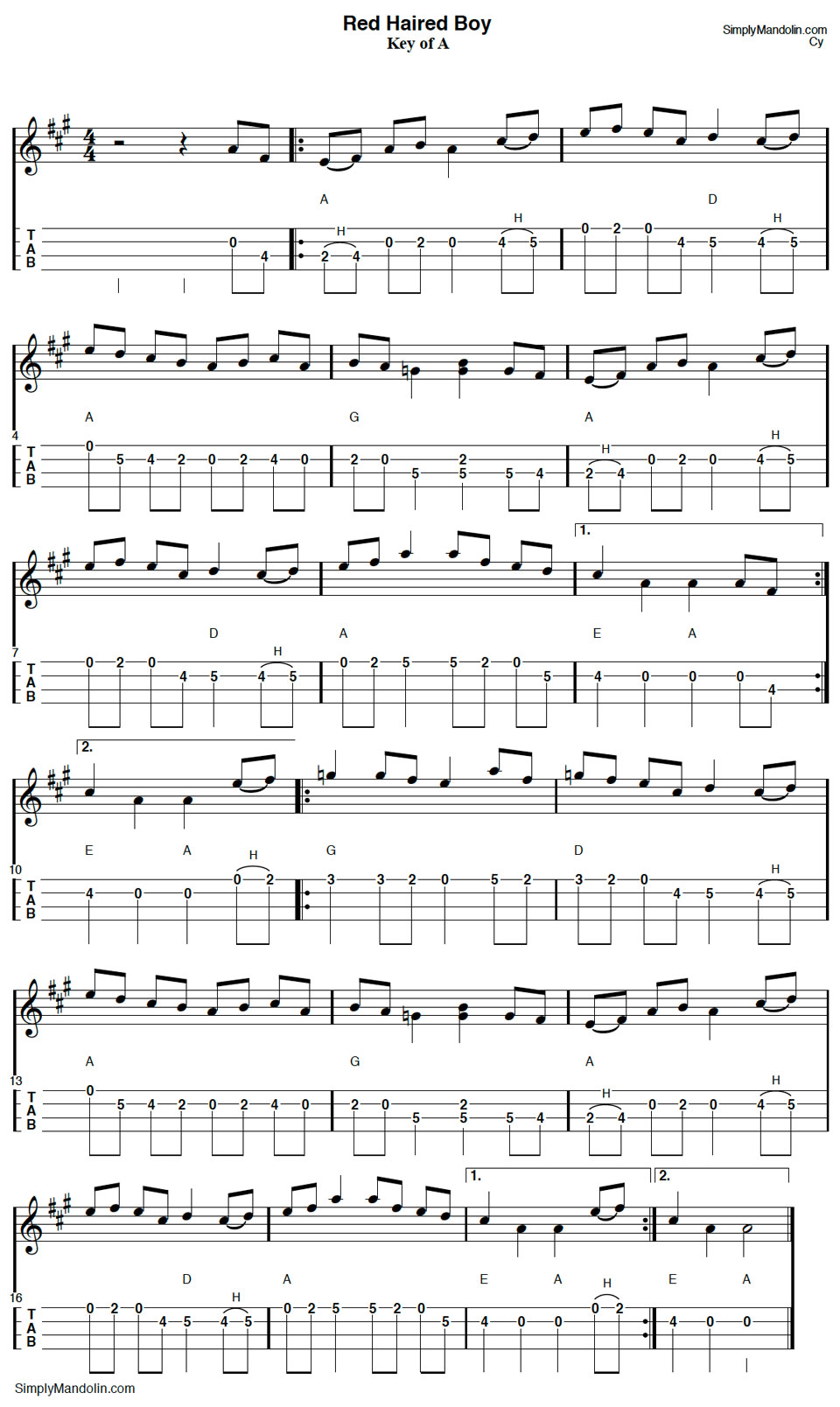Liberty is another classic fiddle tune. You’ve probably heard it. It’s a fairly popular tune at jam sessions and one that is often included in beginner books for almost every bluegrass instrument. Therefore, it’s one of those tunes that you probably want to learn.
I’ve heard this fiddle tune played in a few different keys. I’ve found the key of D to be very common, so that’s what you’ll find on this page. Since there’s nothing too tricky in this arrangement, you should find it easy to learn.
Listen to the tune “Liberty” for mandolin:
Liberty
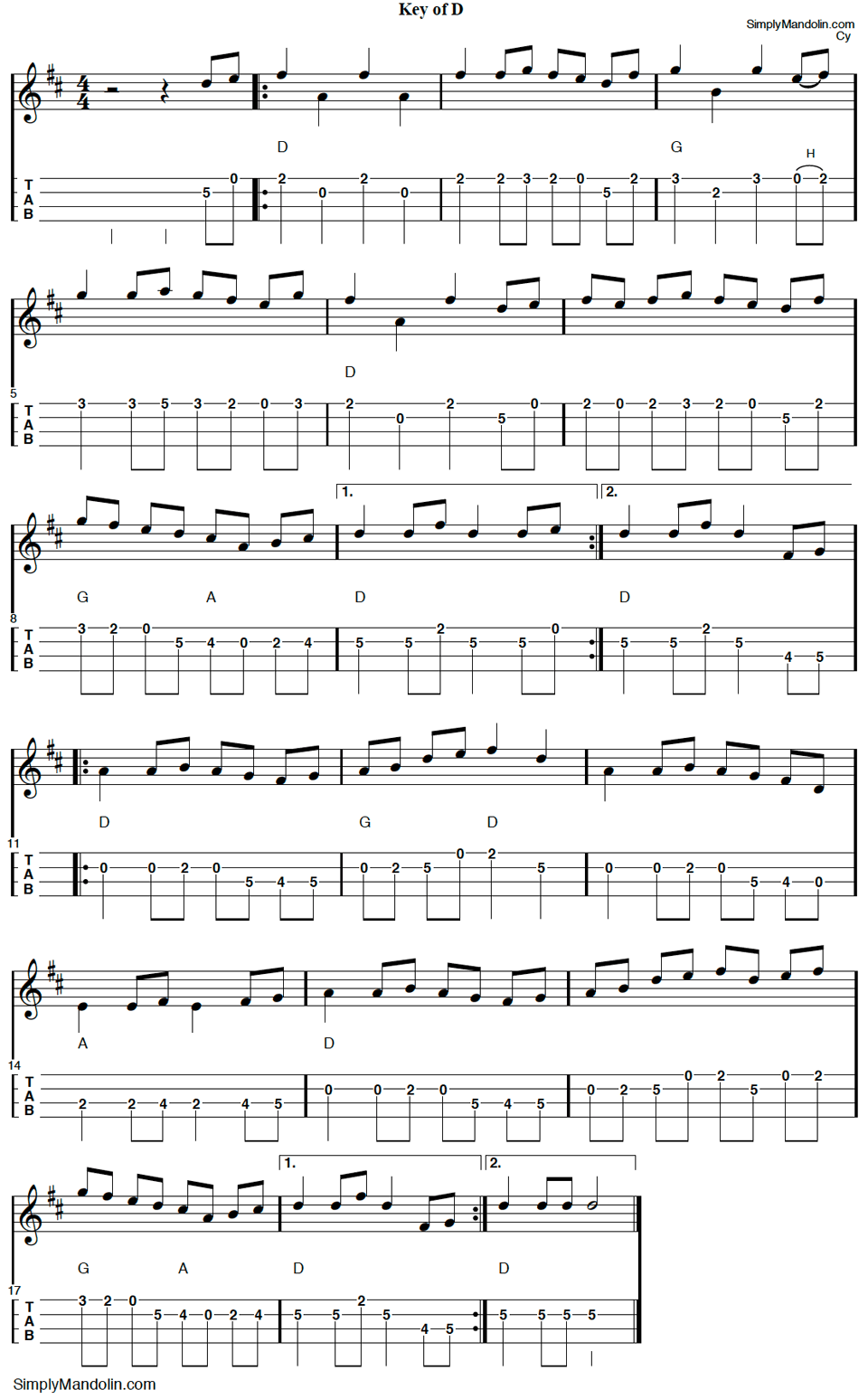
Download:
Tab and Notation
Just the Music
Just the Tab
Beginnings
I learned this tune many years ago on guitar and banjo, and although I’ve seen it sometimes called “Liberty Hornpipe”, I’ve never discovered it under any other name. I always just thought of it as an old American civil war tune. However, when I decided to put it on the website I thought I might take a quick look into the history. I found that, like many old tunes, it’s true origin has become somewhat muddy over the years.
The tune’s birthplace varies, depending on where you get your info. Some say it came from Ireland and was at one time called “The Tipsy Parson”, which of course is very possible – many Irish and Scottish tunes have made their way to America. Elsewhere, I’ve read that Liberty was originally a French Canadian fiddle tune called “Reel De Ti-Jean”. I found nothing on who might have written the tune.
Of course, that’s nothing unusual. There are thousands of tunes out there that have lost most of their history, and we play them every day. Liberty is just one of them.
Wherever it came from, it eventually made its way to America where it is recognized by, or in the repertoire of, most North American fiddlers and musicians.
